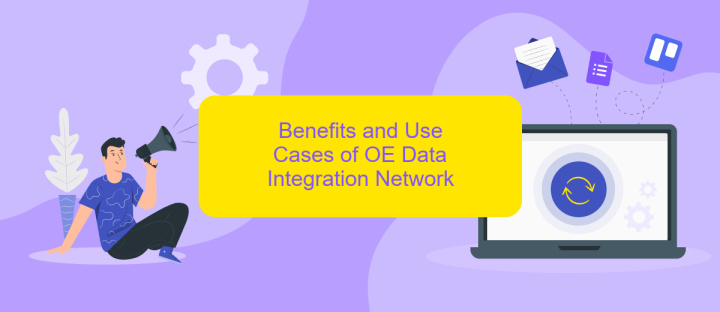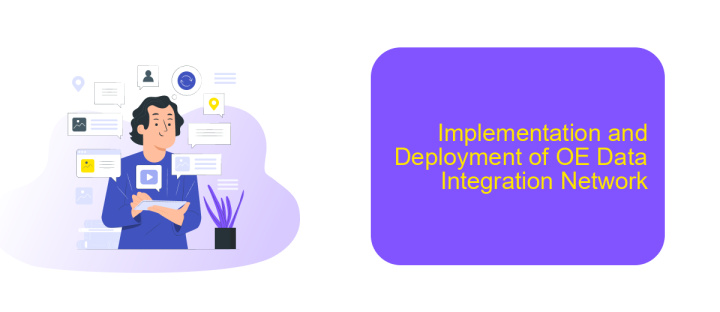OE Data Integration Network
The OE Data Integration Network is a cutting-edge platform designed to streamline and enhance data exchange across various systems and organizations. By leveraging advanced technologies and standardized protocols, it ensures seamless interoperability, improved data accuracy, and efficient information flow. This network empowers businesses to make informed decisions, optimize operations, and drive innovation in an increasingly data-driven world.
Introduction to OE Data Integration Network
The OE Data Integration Network is a powerful framework designed to streamline data exchange between diverse systems and applications. This network facilitates seamless communication, ensuring that data flows efficiently and accurately across different platforms. By leveraging advanced integration techniques, organizations can enhance their operational efficiency and make informed decisions based on real-time data.
- Improved data accuracy and consistency
- Enhanced operational efficiency
- Real-time data access and analysis
- Scalable integration solutions
One of the key tools for setting up these integrations is ApiX-Drive, a service that simplifies the process of connecting various applications and automating data workflows. With ApiX-Drive, users can easily configure integrations without the need for extensive coding knowledge, making it an ideal solution for businesses looking to optimize their data management processes. By utilizing such services, the OE Data Integration Network can deliver robust and reliable data connectivity, empowering organizations to achieve their strategic goals.
Architecture of OE Data Integration Network

The architecture of the OE Data Integration Network is designed to seamlessly connect disparate data sources, ensuring efficient and secure data flow across various platforms. Central to this architecture is a robust data integration layer that acts as a mediator, facilitating data exchange between different systems. This layer employs advanced ETL (Extract, Transform, Load) processes to standardize and cleanse data, making it ready for analysis and reporting. The network is built on a scalable infrastructure, allowing it to handle large volumes of data and adapt to increasing demands without compromising performance.
To streamline the integration process, the OE Data Integration Network leverages services like ApiX-Drive. ApiX-Drive simplifies the connection of various applications and automates data transfer, reducing the need for manual intervention. By providing a user-friendly interface and pre-built connectors, ApiX-Drive enables quick and efficient setup of integrations, ensuring that data is synchronized in real-time. This integration capability is crucial for maintaining data consistency and accuracy across the network, ultimately enhancing decision-making and operational efficiency.
Benefits and Use Cases of OE Data Integration Network

OE Data Integration Network offers numerous benefits and practical applications for businesses seeking to streamline their operations. By integrating various data sources, companies can achieve a more cohesive and efficient workflow, minimizing manual data entry and reducing errors.
- Enhanced Data Accuracy: Automated data integration ensures that information is consistent and up-to-date across all platforms.
- Improved Decision-Making: Real-time data availability allows for more informed and timely business decisions.
- Cost Efficiency: Reducing the need for manual data handling can significantly lower operational costs.
- Scalability: The network can easily scale with the growth of the business, accommodating increasing data volumes and complexity.
- Seamless Integration: Services like ApiX-Drive facilitate the smooth integration of various applications, making the setup process straightforward and hassle-free.
By leveraging the OE Data Integration Network, businesses can not only improve their internal processes but also enhance customer satisfaction through more accurate and timely service delivery. Whether it's synchronizing CRM systems or integrating financial data, the network's versatility makes it an invaluable asset for any organization.
Implementation and Deployment of OE Data Integration Network

The implementation of the OE Data Integration Network begins with a thorough analysis of existing data systems and identifying integration points. It is essential to understand the data flow and the specific requirements of each system to ensure seamless integration.
Deployment involves setting up the necessary infrastructure and configuring the network to facilitate data exchange. Utilizing tools like ApiX-Drive can significantly simplify this process, as it offers a robust platform for connecting various applications and automating data transfers.
- Identify integration points and data flow requirements.
- Set up infrastructure and configure network settings.
- Utilize ApiX-Drive for automating data transfers.
- Test the integration to ensure data accuracy and reliability.
Once the network is configured, continuous monitoring and maintenance are crucial to address any issues promptly. Regular updates and optimizations will help in maintaining the efficiency and effectiveness of the OE Data Integration Network, ensuring that it meets the evolving needs of the organization.


Future Developments and Trends in OE Data Integration Network
In the rapidly evolving landscape of OE Data Integration Networks, future developments are expected to focus heavily on enhancing real-time data processing and analytics. Integration platforms will increasingly leverage artificial intelligence and machine learning to automate data transformation and improve decision-making capabilities. This will allow businesses to gain deeper insights and respond more swiftly to market changes. The adoption of cloud-native architectures will further facilitate scalability and flexibility, enabling organizations to handle larger volumes of data with greater efficiency.
Another significant trend is the growing importance of low-code and no-code integration tools, such as ApiX-Drive, which empower non-technical users to set up and manage data integrations with ease. These platforms will continue to evolve, offering more sophisticated features and broader compatibility with various data sources and destinations. Enhanced security measures, including advanced encryption and compliance with global data protection regulations, will also be a priority to ensure the integrity and confidentiality of integrated data. As these trends unfold, OE Data Integration Networks will become increasingly robust, user-friendly, and secure.
FAQ
What is OE Data Integration Network?
How can OE Data Integration Network benefit my organization?
What are the key components of an OE Data Integration Network?
How do I implement automation and integration in OE Data Integration Network?
What challenges might I face when setting up an OE Data Integration Network?
Strive to take your business to the next level, achieve your goals faster and more efficiently? Apix-Drive is your reliable assistant for these tasks. An online service and application connector will help you automate key business processes and get rid of the routine. You and your employees will free up time for important core tasks. Try Apix-Drive features for free to see the effectiveness of the online connector for yourself.

